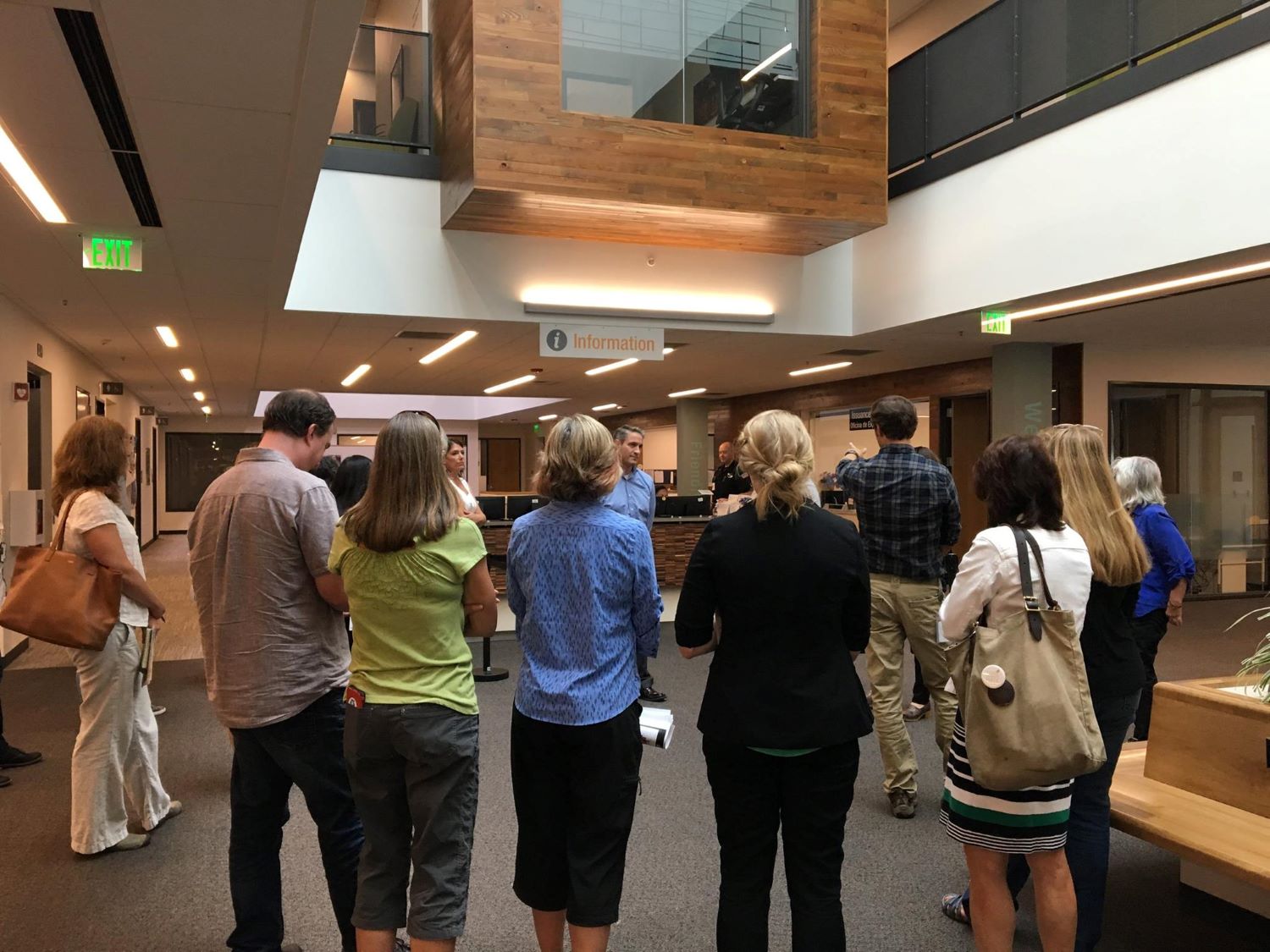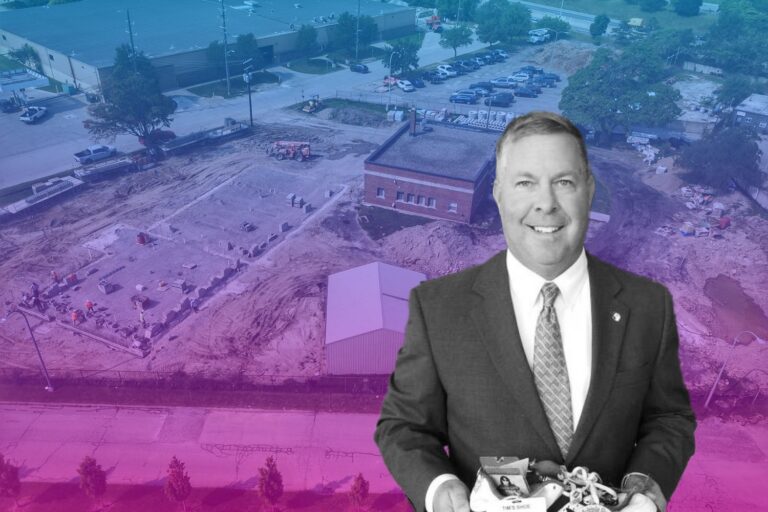Boulder County Goes Strict on Vendors Over Its Complex Asset Management System
One of the most significant strives of asset-intensive firms is maintenance excellence. To attain this goal, various aspects, factors, and facilitators are required. An effectively designed and implemented efficient Asset Management System (AMS/EAM) is one of the most critical tools for achieving maintenance and reliability excellence.
Companies and organizations use asset management systems to monitor and manage their assets. It comprises tools, techniques, and, sometimes, software that support accomplishing asset management policies and objectives.
As economic conditions improved throughout 2022, aided by underlying strengths in the local economy, Bounder County decided to implement an AMS system by soliciting a contract to find qualified, experienced software vendors to provide a full set of Asset Management System (ASM).
Before we get into the meat of the matter, it’s important to understand the County’s position and the circumstances that led to this solicitation.
Boulder County – Foster a Vibrant, Healthy and Active Community
Boulder County was one of the original 17 counties established on November 1, 1861, by the Territory of Colorado. Boulder City and Boulder waterway were called after the county because of the number of rocks in the waterway, which hampered early gold panning operations.
Boulder County has over 300,000 population and some of the most diversified natural landscapes and sustainable development along Colorado’s Northern Front Range.
Located in north-central Colorado, northwest of Denver, the county’s nature covers several dense urban centers surrounded by rural buffer zones and mountain communities, plus parts of Rocky Mountain National Park.
As beautiful as the landscape, the county government promotes a vibrant, healthy, and active community through imaginative open space, land use, and sustainability regulations, as well as forward-thinking public services programs.
Boulder County is a national pioneer in cutting-edge green projects. A national Innovation in Government Award was given to the county’s EnergySmart Services. The Zero Waste program pushes for waste elimination by patterning resource management after nature’s waste-free and self-sustaining systems.

Boulder County’s economy is driven by businesses in various sectors, a highly educated workforce, innovative entrepreneurs, global industry leaders, an appealing standard of life, a world-class research university, and many national research labs.
With low unemployment and excellent pay, the local economy has always been one of the best-performing in the state.
According to data given by the Colorado Department of Labor and Employment, unemployment stood at 2.4% when the COVID-19 pandemic struck in February 2020, but jumped to 10.3% in June 2020. Since then, unemployment has fallen to 3.5% in November.
The improvement comes when fresh data disclose the economic impact of the COVID-19 pandemic in 2020. According to data issued by the U.S. Bureau of Economic Analysis, Boulder County’s real GDP — the total value of goods and services produced, adjusted for inflation — fell 3.2% to $26.6 billion in 2020, from $27.5 billion in 2019.
Boulder County is indeed experiencing recovery and growth while the county faces occasional fiscal difficulties. As the County grows up, the demand for technological advances in managing assets comes along.
Vulnerability Unveiled – When Old-Fashioned Way Can’t Play Anymore
Since 1977, Boulder County through its Parks & Open Space Department has invested millions of dollars and countless hours of staff time to deliver an open space program that achieves its mission: to conserve natural, cultural, and agricultural resources and provide public uses that reflect sound resource management and community values.
Parks & Open Space has safeguarded roughly 105,000 acres of property, which comprises approximately 1,000 separate sites, during the last four and a half decades. The public facilities and structures acquired or built during the department’s history serve as a significant basis for the department’s success.
These assets are constructed, repaired, and maintained by several distinct work groups. In 2019, the department started a strategic planning process to better understand the current and desired future circumstances for public resources and services.
Through this process, it came to be clear that staff were worried about the existing and growing maintenance delays. The team concluded that an enterprise-wide system for tracking and managing assets and their condition was a need.
Currently, work groups acquire, maintain, and evaluate data and information about particular assets on their own. Most of the time, information is limited, incomplete, and/or scattered across numerous places and document kinds.
While some organizations have developed systems to better assess and track their assets, others have been too preoccupied with new property acquisitions, capital projects, emergency repairs, and other priorities to focus on long-term asset maintenance, resulting in a significant maintenance backlog.
Although the department is primarily interested in an AMS for physical assets, it is also interested in the possibility of using the AMS in the future to track the maintenance and management of a variety of natural and agricultural resources, including weed management, forestry, ecological restoration, and cropland management projects.
A Paradigm Shift – Elevating Asset Management
Asset management has traditionally been performed through the use of excel spreadsheets and other documents with no common connection to bring these spatially distinct elements together into a unified, synergistic system.
A boom of forms-driven technology solutions in the late 1990s and early 2000s combined specific asset data into a common image, but with little to no location information. Agencies also used a few of these technology solutions or AMS to handle different classes of assets.

Today, there is an abundance of location data. Everything contains locational data that may be identified using the various methods available.
Service requests, replacement dates, charges, condition assessments, and much more can be linked in an integrated AMS using location as a common denominator – no more separate systems and static, out-of-date spreadsheets!
Bounder County intends to acquire an AMS to enjoy these conveniences and to better the management phase. To understand what vendor needs to fulfill, it’s good to take a look at the county’s asset status and requirements for proposers.
Status Revealed – Present Materials to Work on
Boulder County currently supports a variety of platforms and applications. It has approximately 2000 computer users and 400 plus production servers running VMware, Linux, MS Windows Server, and workstations with Windows 10. The county supports 300 plus Oracle and MS SQL databases. SharePoint, .Net, and Microsoft IIS as its primary internal web platform.
MimeCast is used for spam control and gateway antivirus, Sophos Endpoint for virus protection and malware for servers and clients. Palo Alto is used for internet browsing filters and logging on prem, GlobalProtect firewalls, and A-10 Web Application firewalls. Network devices are all Cisco and IP Telephony is Microsoft Teams.
With over 300 wireless access points, most county buildings have Wi-Fi connectivity, both internal and visitor. The county has a wide range of internet connections. Microsoft Exchange is used in the back office, along with Azure Active Directory and Duo multifactor authentication.
Over 200 third-party programs, as well as various in-house developed applications, Efax, Zix Secure email, and several cloud applications, are supported.
Boulder County was looking for a system/software solution that will work with their current technology platform environment. Windows 10, Server 2019 or newer, Azure Active Directory integration with Duo for multifactor authentication, and a SQL database were all required.
They were also interested in the system’s network needs, database software and requirements, server requirements, and VMware support.
Boulder County was ready to learn more about the system’s hosting choices, including the opportunity to be hosted by the County itself. They were curious about the system’s compatibility with various platforms for on-premise hosting.
Aside from that, the County wanted to know about the system’s security features, data access capabilities, reporting and analytics tools, support and maintenance procedures, and any encryption methods used to secure data in transit and at rest.
Boulder County expected contractors to follow its data and cyber security policies. This included safeguarding personally identifiable information, abiding to privacy laws, and conforming to industry standards such as PCI-DSS for purchasing card-related operations. Vendors who have access to criminal justice or health information must adhere to strict security measures, and those that handle data on children must adhere to COPPA.
Hosted IT service providers must have security safeguards and incident response procedures. Data confidentiality, integrity, and deletion procedures are essential, and vendors must report security breaches as soon as possible.
Having comprehended the asset background and the County expectations for contractors, we are in the position to get deeper into what the winning vendor needs to fulfil during the time of the contract.
Future-Proofing with AMS – 5 Years to Reach New Heights
Boulder County has outlined a phased timeline for the development and implementation of an Asset Management System (AMS) to enhance operational efficiency. Year 1 (2023) focuses on AMS platform development, data migration for priority tier 1 assets, staff training, and integrating AMS into workflows.
Year 2 (2024) includes continued data migration, incorporating tier 2 assets, ongoing training, AMS integration, and annual maintenance. From Year 3 onwards, the focus is on remaining data migration, additional training, AMS integration, and annual maintenance.
The timeline will be adjusted based on the vendor’s plan, task completion, vendor readiness, and staff preparedness. Boulder County plans to train and migrate different groups to the AMS over multiple years, and pricing will be provided for Years 1-5.
During this period, the vendor needs to fulfill several tasks and deliverables.
First, in the project Management and administration phase that encompasses general administration, communication, coordination, scheduling, reporting, and customer service. The vendor will appoint a primary project manager and an assistant project manager who will work closely with the county project manager(s).

This involves managing project schedules, budgets, communication, and conducting project coordination meetings. The vendor will also deliver project kickoff meetings, training sessions, and workshops, ensuring clear and timely communication with the county project manager(s).
Next, technical review and documentation phase entails gathering technical information, documenting AMS system requirements, architecture, integration with county systems, and providing maintenance best practices. The vendor will also address the integration of the AMS with existing software/systems used by Boulder County, such as NetFacilities, PAVER, RTA, and others. All documentation will be provided in electronic format.
Software installation and configuration part involves installing and configuring the AMS according to technical designs and county requirements. This includes customizing AMS fields, reporting structures, work orders, data migration planning, testing, and reporting/data analytics tools.
In this stage, the execution will be carried out in multiple phases with a clear deployment schedule. Data migration and retention planning will be done collaboratively between Boulder County and the vendor, ensuring inventorying and migration of necessary data.
Furthermore, the vendor needs to provide training for system administrators, field staff, and end users, with recorded sessions and ongoing support.
To ensure the AMS functions effectively, with timely upgrades and issue resolutions, The contract winner is going to offer technical Support and maintenance. The vendor will offer direct access to the client, annual check-ins, and additional maintenance services beyond standard upgrades and patches.
These tasks imply the County effort in enhancing the management stage, and it comes with several objectives.
Optimizing Efficiency: Embracing Technology for Swifter Results
An AMS’s overall goal is to have a technological solution available in the office and in the field to assist staff in tracking, managing, and maintaining a variety of asset types and planning work related to those assets, such as automated preventative maintenance scheduling and prioritization based on risk coefficients and optimizing budgetary and staffing constraints.
The County intends to adopt AMS in a gradual, iterative fashion as they learn, evolve, and sustainably integrate the system into day-to-day operations. The AMS will be GIS (Geographic Information System)-centric, with no application programming interfaces (API) or unconnected interfaces, and will integrate seamlessly with the county’s Esri-based platform (likely leveraging spatial services).
The AMS must include non-redundant GIS feature services enabling direct and instantaneous asset display and editing of points, lines, polygons, and relevant attributes. The AMS will deliver significant benefits to the county, including enhanced operations and maintenance, simpler data cataloging and asset inventory, asset life cycle optimization, and operational efficiency maximization.
It will give crucial data-driven evaluation tools for decision making, budgeting, and work planning.
The AMS will enable customization and adjustments over time without the need for expensive expenses or changes in business processes for system upgrades or revisions. Furthermore, the AMS will be straightforward, intuitive, and simple to use for personnel with varying degrees of technical expertise.
With the objectives outlined, the vendor for the position will be carrying out an important task. Since the demands are heavy, it forces a wise evaluation to pick up the right puzzle from a bag of gold and dust.
Full Set of Criteria to Filter out the Real Gold
The proposals have been reviewed by a selection committee. The committee might request additional information from vendors or request interviews with one or more vendors. Final evaluation and selection based on, but not limited to, any or all of the following:
| Description | Points |
| Strategy and approach presented in proposal | 20 |
| Quality and suitability of the AMS Software/System | 20 |
| Qualifications and experience of the vendor including Project Manager, Assistant Project Manager, and other key staff | 15 |
| Total cost or proposed pricing over total implementation time | 15 |
| Timeline and timeliness | 15 |
| Understanding of Boulder County and its needs as expressed in RFP | 15 |
| Total Possible | 100 |
Committee members scored each vendor independently using the evaluation criteria, and then the committee combined their individual scores for each vendor.
Regarding the total scores that each vendor receives and other considerations by the review committee, the top 3-5 vendors have been selected for interviews and demonstrations of their AMS.
Following the interviews, demonstrations, and reference checks, the review committee has selected the vendor that is in the best interest of the county.
This decision holds significant meaning for Boulder County as it’s already determined the partner who will provide the AMS solution, which is essential for improving operational efficiency, data management, and asset maintenance.
Translating Dreams into Reality – Unlocking the Extreme Potential of AMS
Assets appear in a variety of sizes and types, but one fact is for certain: every business has assets.
Local governments maintain capital-intensive infrastructure, with water and sewer systems among the costliest to administer. To cut expenses, it’s critical to prioritize maintenance and repairs, as well as evaluate and track these assets on a regular basis through condition assessments.
Effective asset management can bring significant benefits to Boulder County. Firstly, it allows the county to optimize costs by ensuring efficient utilization of its assets. By accurately tracking and monitoring assets, the county can identify redundancies, avoid unnecessary purchases, and make informed decisions regarding maintenance and replacements. This proactive approach helps minimize expenses, saving valuable taxpayer dollars.

Secondly, implementing robust asset management practices improves service delivery to the county’s residents. By having a clear understanding of the location, condition, and availability of assets, the county can better plan and allocate resources.
This leads to more effective and timely service provision, as assets can be strategically deployed where they are most needed. Additionally, proactive maintenance and repairs can be scheduled, reducing downtime, and ensuring services are delivered smoothly and reliably.
Furthermore, asset management is crucial for regulatory compliance. Boulder County, like any other jurisdiction, must adhere to various regulations and standards related to asset management.
By accurately documenting and maintaining asset inventory records, tracking asset lifecycles, and ensuring compliance with safety and environmental requirements, the county can demonstrate its commitment to responsible governance and avoid potential penalties or legal issues.
Bottom Lines
In asset management, there is so much going on that the usual manual workflow becomes laborious and unproductive. A company with a high number of assets would undoubtedly find it challenging to monitor and utilize its assets. Fortunately, we live in a digital age in which most business procedures can be automated to assist firms in becoming nimbler.
Asset management enables organizations to optimize their return on investment while minimizing losses. Assets are valuable goods from which a corporation or organization benefits. Asset management allows stakeholders to monitor the overall performance and condition of their assets and guarantee that they are used efficiently throughout their useful life.
Boulder County Parks & Open Space mission is to conserve natural, cultural, and agricultural resources and provide public uses that reflect sound resource management and community values. Adopting AMS is going to add to the abundance to its mission in many ways.









